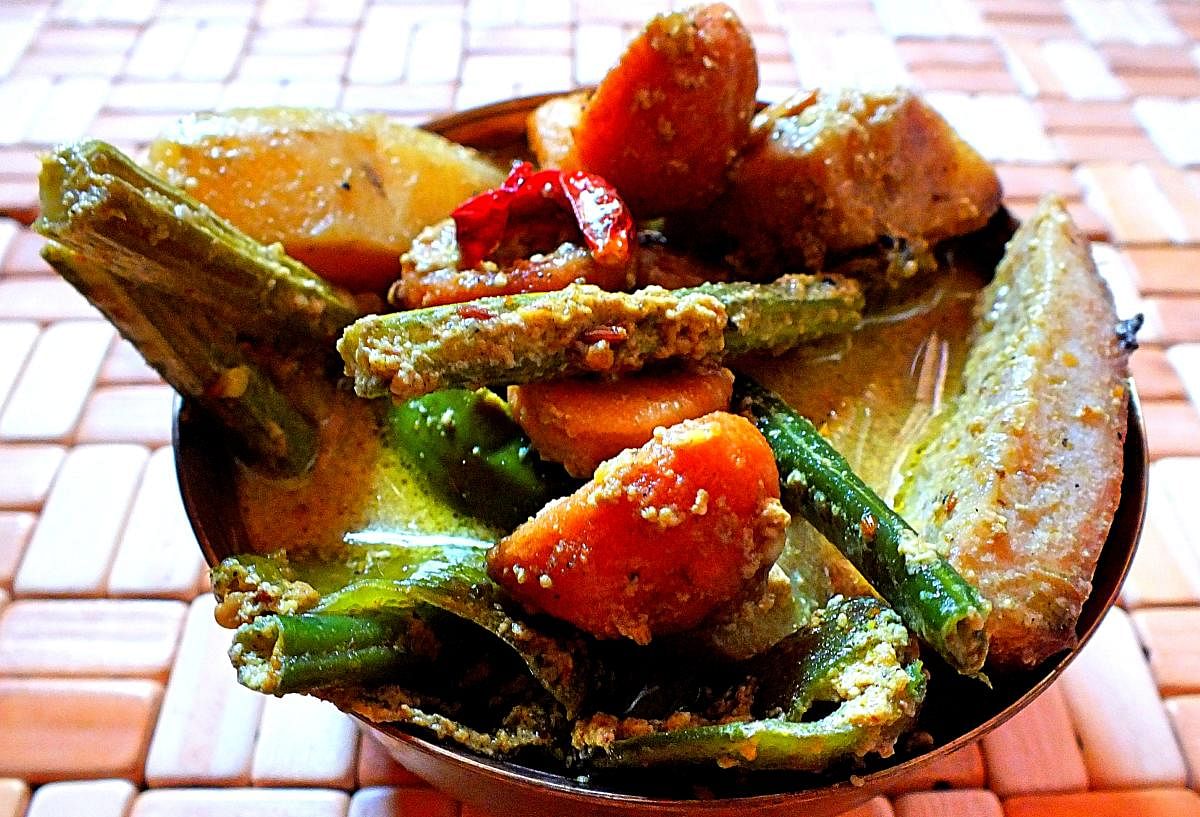
Growing up in the countryside of Jharkhand in a small hamlet named McCluskiegunj, my childhood might be envied by many children confined to small urban spaces. But while the luxuriant natural surrounds were conducive for physical activities and adventures, it also meant healthy greens were a regular part of our meals, something most children are averse to. But even though I would run the farthest when served leaves or flowers from trees that grew wild around us, I now fondly look back on the fun I had sourcing them.
Food gathering comes naturally to us humans, and although we might no longer totally depend on natural food sources for our sustenance, nutritious wild food plants continue to constitute our diet. One such tree is Koenar, which sprouts tender new leaves just before the monsoon. Owing to its medium size, these trees are easy and fun to climb, and despite detesting the taste of Koenar saag, I often found plucking the nutrient-rich camel-feet shaped leaves more pleasurable than doing homework. While locals sun-dried the leaves and stored them for times when green vegetables became scarce, to make a chutney by adding garlic, chillies and salt to the rehydrated leaves, we did a simple stir-fry by tempering hot mustard oil with cumin seeds and dry red chilli, sautéed onions, to which we added fresh-picked leaves and seasoned with salt. The flowers of another variety, the Kachnar tree, which grows abundantly across the country, are blanched, ground and mixed with salt and mustard oil and eaten with rice, while buds are added to curries in north India. But the lesser-known Jirhul flower is predominantly a delicacy of the Adivasi community of Jharkhand, where it grows wild in the forests. Two bushes grew in our backyard and the sight of eye-popping pink flowers peeking through a grey blanket of winter mist enveloping dense green foliage were so alluring, I eagerly volunteered to pluck them. These flowers too are blanched before they are cooked with potato, onion, a spice mix of turmeric, red chilli, cumin and coriander and seasoned with salt.
As I grew to understand the nutritional significance of healthy greens and appreciated the importance of wild trees as a food source, especially to indigenous communities, I often craved those rustic flavours when I moved to Kolkata. But after my marriage into a Bengali family, one afternoon, I unsuspectingly spooned into my mouth a combination of eggplant and what I’d presumed were crispy fried curry leaves, which turned out to be bitter neem leaves. The acrid taste instantly reminded me of home, where a spreading neem tree grew in our garden, whose leaves my father would grind to a paste and make tiny pellets and feed to us as a malaria preventive.
While I was aware of the multiple medicinal benefits of neem, especially for the gut and skin, I only came to know of its culinary value while residing in Kolkata. Neem flowers are a popular ingredient in chutneys and stews in southern India, and in Bengal where it’s a tradition to start a meal with teto, or bitter foods, neem begun, (crispy fried neem leaves with eggplant) is often served — a dish saint Chaitanya Mahaprabhu supposedly relished too. Good for stimulating the taste buds and working up a healthy appetite in humid summers, when the neem leaf is tender, it sometimes even substitutes the bitter ingredient in one of Bengal’s favourite traditional delicacies, shukto. But unlike shukto which I’ve acquired a taste for, it might take a lifetime to get used to the bitterness of neem.